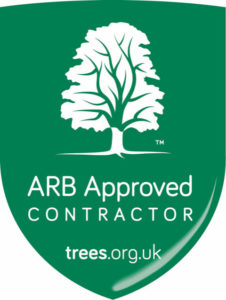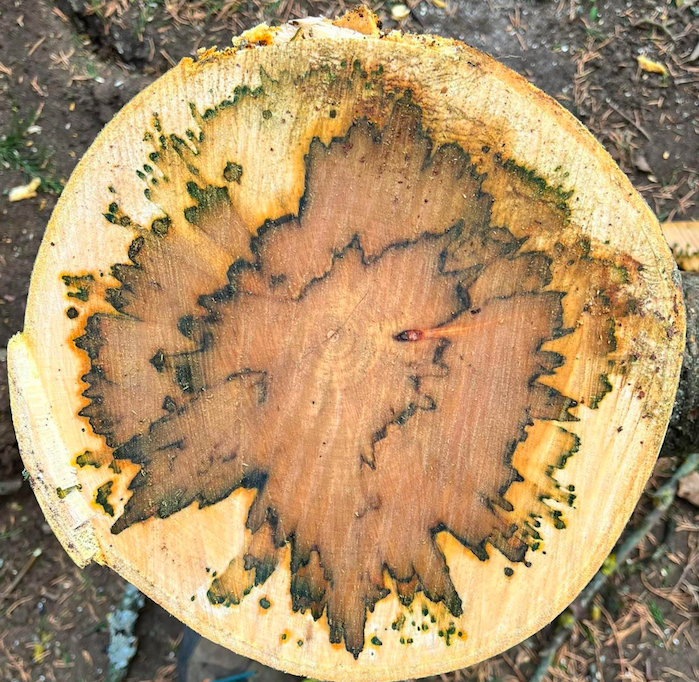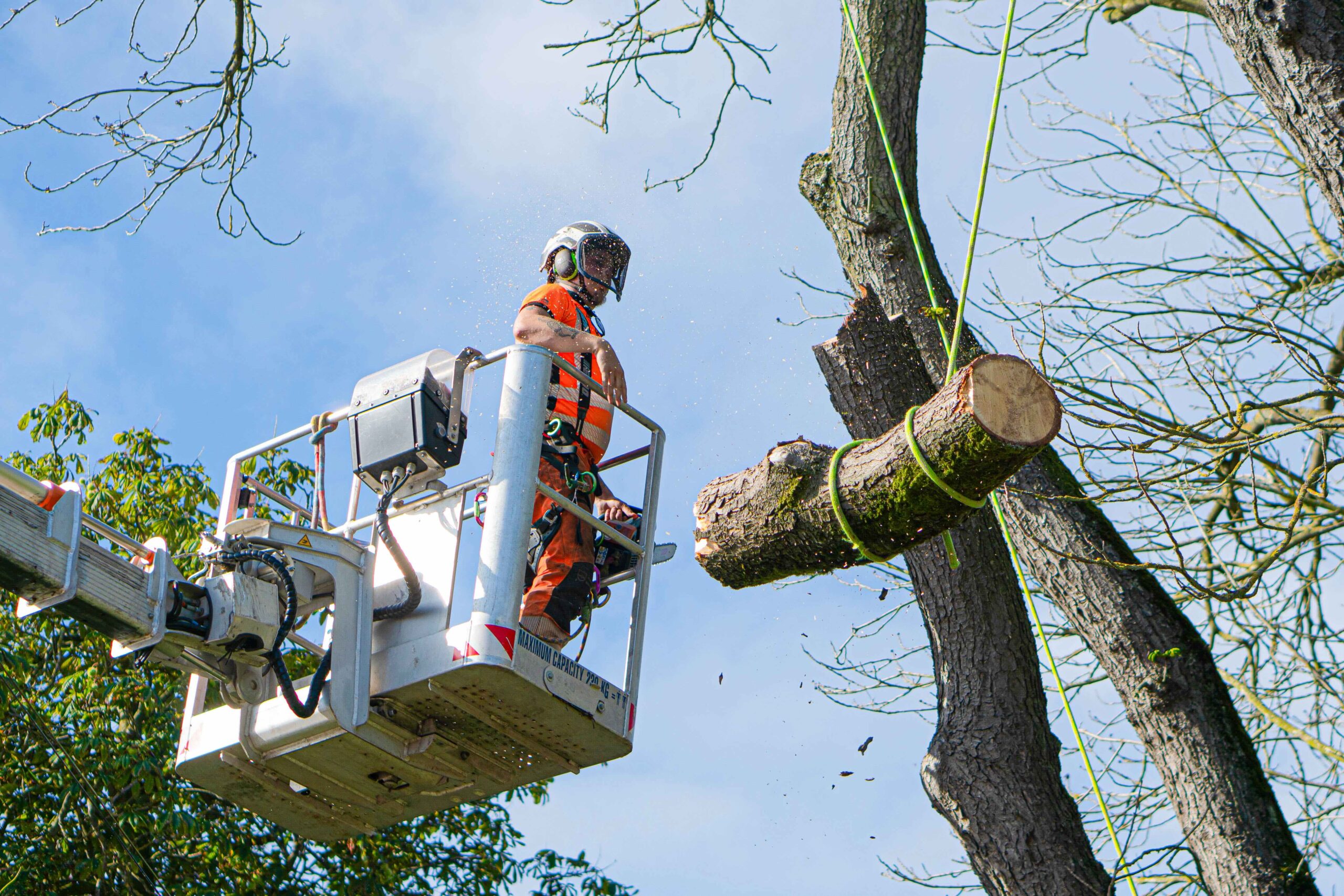What is CODIT?
Speaking in literature, CODIT is an acronym for the Compartmentalisation Of Decay In Trees.
In Arboricultural terms, it defines the way in which trees react to attack from infection / decay fungi, preventing rot from progressing through the tree.
In Arboricultural terms, CODIT is a concept first described by Alex Shigo, a biologist and plant pathologist. His studies of tree decay improved modern standards of arboriculture, in which he details four barriers to the spread of decay in trees. The barriers, also known as the barrier zone, are the most effective in confining decay and preventing its spread through the vascular system of a tree. His work defines the way in which trees react to attack from infection / decay fungi, preventing rot from progressing through the tree.
A tree will create barriers around any wounds – these barriers are called walls and there are 4 types which react differently to infection. By separating the infected material from the rest of the tree, it is possible for the spread of infection to be mitigated, thus keeping the tree healthier for longer.
Think of the tree as a sinking ship: a breach in the hull allows water into a compartment. The ship’s crew seal off the area by closing a door, preventing the spread of the water throughout the ship and stopping it from sinking – or in this case the tree from dying.
What are the four walls of CODIT?
Wall 1: The weakest of the four is a vertical wall formed in the vascular system that prevents the movement of decay up and down the stem/branch. The cell tissues are blocked by tylosis – a physiological process that creates a blockage in the xylem of wood in response to both injury and the attack of decay.
Wall 2: The second weakest is the tangential wall: resisting the inward path of decay through lignin-rich cells, the wall is formed by the last cells that make up the annual growth rings of the tree. Except at the intersection of ray cells, this process is continuous around each growth ring.
Wall 3: This wall constitutes the existing Ray cells within the woods structure. These radiate perpendicular to the vertical axis, by dividing segments of the stem – not dissimilar to slices of pie. The radial parenchyma sheets are very thick, formed by parenchyma cells packed close together. This wall inhibits the radial movement of decay by forming a maze-like barrier – whilst these groups of cells are not continuous, they vary in thickness, length and height and can become toxic to microorganisms by changing their chemical state. This wall is the strongest wall prior to the growth of the fourth wall.
Wall 4: The strongest wall is a new protective “barrier zone’ that is created by the cambium to seal off the wound from the outside, preventing growth of decay from penetrating further into healthy wood by closing the wound. This may never fully cover the wound, which is when you see hollow trees with new, callused wood on the outside. This wall can also create a toxic chemical barrier that is detrimental to decay microorganisms.
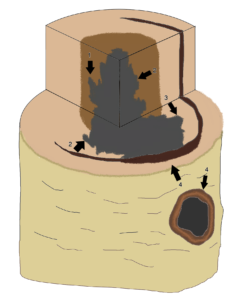
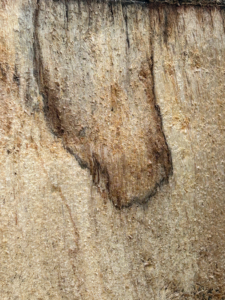
Fig 2: Example of wall 1 – vertical ”plugging” of the conductive vessels prevents the spread of decay, The pits, which border the vessels, ensure vascular functionality is retained by promoting the localised lateral movement of water around the plugged vessels (Watson, 2006),
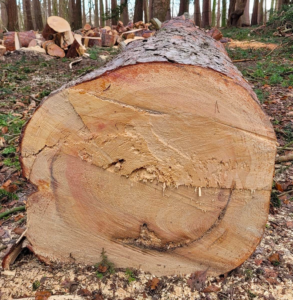
Fig 3: Example of wall 2 – Tangential. This wall is stronger than the first wall and is strengthened post- wounding by tyloses and suberin within parenchyma cells. (Shigo et al., 1977).
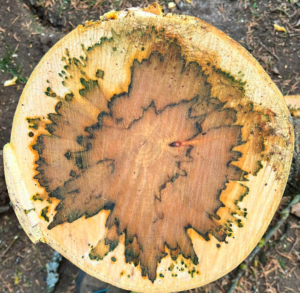
Fig 4: Example of wall 3 – Radial. The rays will not come into contact with another to further safeguard against spread of decay.
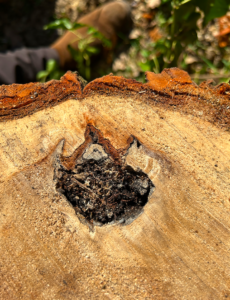
Fig 5: Example of wall 4 – Callus. sealing of the wound by undifferentiated tissue initiated as a result of wounding and which become specialised tissues to facilitate the repair over time.
Does CODIT always work?
In short- no. Whilst CODIT can prevent the spread of infection, if a tree has a lot of points of intrusion to compartmentalise this can use valuable resources that stress the tree out, leading to decline. – The tree has a limited amount of energy to expel throughout the year- from root formation, reactionary growth, new foliage, CODIT, branch growth and more. By preventing or restricting valuable resources from vertically traversing the trees vascular system, the tree is unable to fully process nutrients such as carbohydrates/ sugars and H20, leading to loss of foliage. This decline could lead to significant mechanical, catastrophic failure, reduced vitality in the crown and even death of the tree.
However, small amounts of CODIT can be managed by the tree – and where the fourth wall fails to completely seal a wound, habitat for other organisms can be created- such as bees, birds, bats, microorganisms, and invertebrates. This creation of habitat plays a vital role in supporting flora and fauna.
How can we tell if a tree is rotten?
Sometimes these wounds can seal over but cause weak points in the structure of the tree, leading to possible failure later in the tree’s life. These are often only noticed by a trained eye, due to the effects mentioned above becoming visible or prevalent.
To confirm, there are a few methods and tools available to an arborist to determine the underlying structural integrity of the tree. From a simple but effective mallet to determine location of decay, mechanical invasive Resistograph Microdrill to measure resistance of rotational and lateral movement of its drill bit in a trees structure, to an electronic system using Sonic Tomography.
Sonic tomography is a fairly new technology that uses soundwaves to detect decay in trees, creating a 2D or 3D image of the internal structure of a tree at a pre-determined point. This is often around the lower stem of a tree near the intersection of the root collar/ flare and the lower stem. However, if decay is noted higher up the stem or significant branch/ union, this method can be installed within the canopy of the tree. The data collected then can be used by a qualified arborist to determine the trees condition and, more importantly, the trees risk of failure.
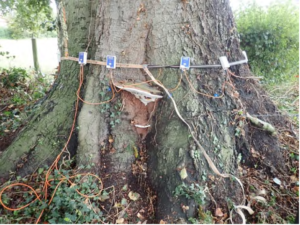
Fig 6: Sonic Tomography (PICUS) installed on a Beech (Fagus sylvatica).
Note: The Ganoderma species fungal fruiting brackets in the centre of the picture.
These are a definite indicator of some degree of internal decay.
Image courtesy of Treecare consultants LTD
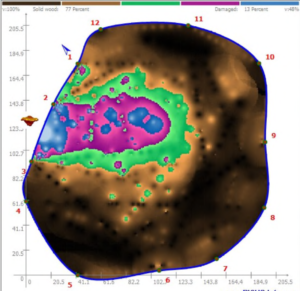
Fig 7: Soundwave tomogram at 60cm above ground level.
Note: The darker Brown colours are solid wood. The green, purple and blues are different densities and stages of decay.
Image courtesy of Treecare consultants LTD.
What should I do to help treat a damaged tree?
Whilst good clean pruning cuts conforming to BS3998 can be used to tidy a broken or failed limb, painting, or treating the area or filling with soil, foam or concrete should be avoided.
The tree will begin the natural process of CODIT on its own and further damage to the fourth wall can lead to the spread of infection. Large areas of damage should be inspected visually by a qualified arborist to ascertain the extent of the damage and a suitable recommendation (if any) should be undertaken. Badly pruned trees can hinder the process of CODIT so works should always be undertaken by a qualified arborist.

